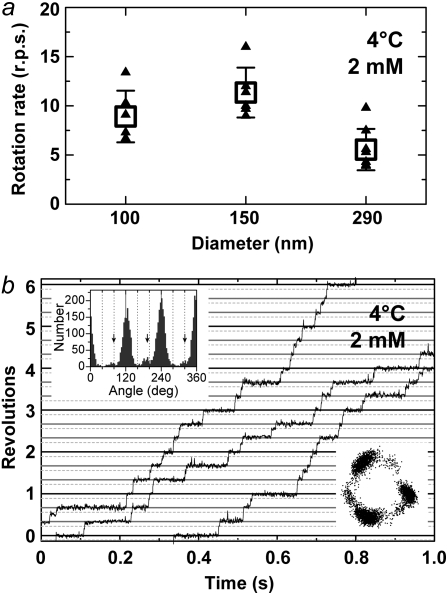FIGURE 5.
Rotation at 4°C observed with 150-nm or 100-nm gold beads. (a) Comparison of time-averaged rotation rates at 2 mM ATP between beads of different sizes. Small triangles are individual rates over >100 consecutive revolutions (except for two triangles for 0.29-μm beads that made 16 and 40 revolutions), and squares their averages (n ≥ 6), with error bars showing the standard deviations. The 100-nm and 150-nm gold beads averaged 8.9 ± 2.6 and 11.4 ± 2.5 revolutions s−1 (rps), respectively, and 0.29-μm plastic beads (also in Fig. 6 a) 5.6 ± 2.1 rps. Whether these beads were single or duplex was difficult to ascertain. (b) A time course of rotation with a 100-nm gold bead (or duplex) at 2 mM ATP, captured at 2000 frames s−1. The three curves are continuous, with some overlaps at ends. Horizontal solid lines are separated by 120°, and dotted lines are placed 40° below. (Upper inset) Histogram of angular positions for the indicated time course, with side peaks at ∼80° positions (arrows). Not all beads showed clear side peaks. (Lower inset) Trajectory of the bead centroid.

